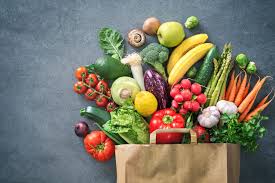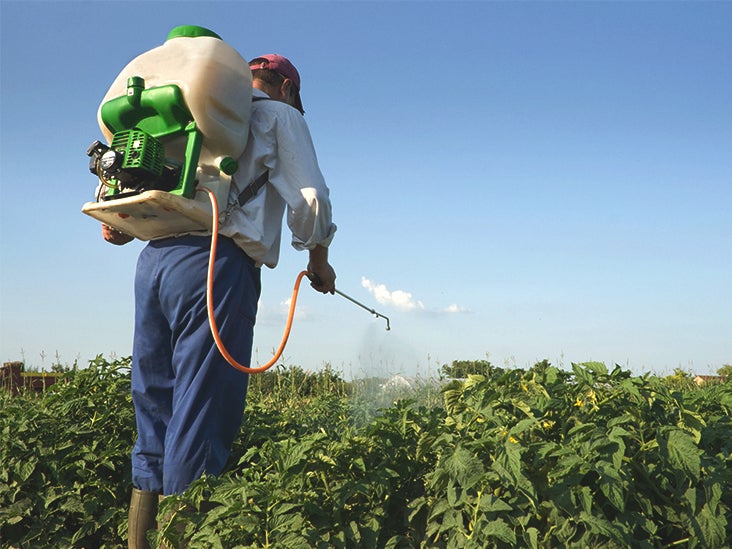GMOs, Friends or Foe pt. 2

Welcome back to GMOs, Friends or Foe. Today, in part 2, we will check out what makes GMOs safe.
After years of study, the research is in. GMOs are no more dangerous than their organic counterparts. “Typically, it takes 12-15 years before a GMO product can go to market,” says Adam Postovit, researcher of GMOs. “This is because the company creating the GMO has to have years of internal study on safety, along with USDA independent studies into safety.”
Thousands of studies have concluded that GMOs are safe. In 2016, a study was conducted by The National Academies of Sciences, Engineering, and Medicine. It said in a tweet, “no substantiated evidence of a difference in risks to human health between current commercially available genetically engineered (GE) crops and conventionally bred crops.” But the big unease is that the DNA that was placed into the plants comes from pathogens. However, there has been no evidence that the consumption of GMOs has caused harm to any person. These studies come from the World Health Organization, to the ACSH.
The crops that have been genetically modified have to pass through the Food and Drug Administration (FDA), the United States Environmental Protection Agency (EPA), and the United States Department of Agriculture (USDA) before they can be sold in the market. The FDA is responsible for checking if the food is safe to eat. The EPA makes sure it would be safe for the environment. And the USDA examines if the genetic crops are safe to grow. So, are GMOs the best choice?
 Let’s put GMOs aside and start talking about organics for a bit. “Organic” has always been seen as the best kind of food you can get. Markets started growing more organics thanks to their organic livestock and vegetation products. The labeling of “organic” makes us think that it’s good for our health and for the environment. But that can be very unclear. Let’s talk about what makes a product “organic.” Overall, organic means that the product has not been through toxic pesticides or human-made fertilizers, and it’s not genetically modified. Unlike GMOs, weeds are removed naturally by crop rotation and by just doing it by hand, so no weed killers are used. In the removal of pests, natural predators are applied, and sometimes naturally-derived pesticides. Research has shown that organic fruits and vegetables have more antioxidant levels than crops made in GMOs industries. Because there is little trace of human chemicals in the food, they are considered safer to eat. Keyword being “little.”
Let’s put GMOs aside and start talking about organics for a bit. “Organic” has always been seen as the best kind of food you can get. Markets started growing more organics thanks to their organic livestock and vegetation products. The labeling of “organic” makes us think that it’s good for our health and for the environment. But that can be very unclear. Let’s talk about what makes a product “organic.” Overall, organic means that the product has not been through toxic pesticides or human-made fertilizers, and it’s not genetically modified. Unlike GMOs, weeds are removed naturally by crop rotation and by just doing it by hand, so no weed killers are used. In the removal of pests, natural predators are applied, and sometimes naturally-derived pesticides. Research has shown that organic fruits and vegetables have more antioxidant levels than crops made in GMOs industries. Because there is little trace of human chemicals in the food, they are considered safer to eat. Keyword being “little.”
There have been cases where some of the food considered organic has had traces of pesticides in them, but some of you know that these types of pesticides are natural. However, that doesn’t make it “better.” These “natural” pesticides can still harm non-pest critters, like ladybugs and, more importantly, bees. Both synthetic and natural pesticides are toxic to human health.
What about nutrition? As surprising as it sounds, scientists find very little difference in nutrition between both the GM crops and organic crops. There have been some cases that organic milk and chicken have slightly more fatty acids, but that’s pretty much it.
What about the environment? For organics, that question can come in different forms. Organic can help the environment by helping reduce the use of pesticide, similarly to GMOs, and by helping animals and plants nearby like birds eating pests. Plus, organic farming also helps with adding more nutritious soil, which is very helpful to nearby areas. However, organic also has it’s disadvantages with nature. Because organic is hard to pull off and requires a lot of land, deforestation is an issue. Unlike GMOs, which make more income in a small area, organic doesn’t make as much profit, and is thus in need of more land,
/GettyImages-187580911-71dafddf4f874278ac85a2dac6de68b8.jpg) especially for organic companies who want their animals to be roam-free. And since the demand for organic is rising, more and more forests will be cut down for their farms. Organic farming has also been shown to contribute more into climate change. The main problem to this is their way of fertilizing. Manure contains a lot of methane, especially from pigs and cows, which traps 21 times more heat than carbon dioxide. Long crop rotations store more carbon in the soil, which was said not to stay in there for long. Since machinery is used in the removal for land, it will send tons of carbon dioxide in the atmosphere. Machinery is not only in use for deforestation, but also can be used in removing weeds, adding even more CO2 into the air.
especially for organic companies who want their animals to be roam-free. And since the demand for organic is rising, more and more forests will be cut down for their farms. Organic farming has also been shown to contribute more into climate change. The main problem to this is their way of fertilizing. Manure contains a lot of methane, especially from pigs and cows, which traps 21 times more heat than carbon dioxide. Long crop rotations store more carbon in the soil, which was said not to stay in there for long. Since machinery is used in the removal for land, it will send tons of carbon dioxide in the atmosphere. Machinery is not only in use for deforestation, but also can be used in removing weeds, adding even more CO2 into the air.
So what’s the point of buying organic? Buying organic doesn’t make you a good or bad person, nor it will make you healthier than from eating GMO products. You choose what you think is best for the negative cause you are trying to stop or what you believe is the best choice.

But what is the future of GMOs? As GMOs are becoming a more and more important subject, there will be more laws for them. Public opinion is getting in the way of how GMOs should be handled, and can lead to a problem with people with no true knowledge of how GMOs work. If laws are made to prohibit GMOs, then we would have a unfortunate situation, because there are places in the world that are really in need of these genetically modified organisms, from droughts in East Africa, to flooding in South America. GMOs have helped the high production of agricultural goods, but we can do much more than that.
Many scientists are now focusing on what other benefits they can make with GMOs other than just making vegetation bigger. Scientists are working on plants that involve helping our environment from the mistakes we humans have caused. For example, we can help reduce climate change by genetically modifying trees, like the American chestnut tree, to absorb more carbon dioxide. Scientists are also working on making plants that take in nitrogen from the air. This is important because Nitrogen is a common fertilizer that has its problems in both developed and developing countries. In developed countries, too much fertilizer is being used, and is causing toxicity in groundwater. While in developing countries, there is too little nitrogen fertilizer for them to use. Plants that are genetically modified to take in nitrogen by themselves would solve both problems, and we can use them to help parts of the world that rely on few food sources.
Relying on only a few food sources can lead to problems in the body by not getting all nutrients the body needs in order to survive, like vitamins. For example, in the Philippines, people rely so much on their rice that they don’t consider anything as a meal unless it comes with rice. In 2018, per capita white rice consumption in the Philippines was 315 g daily! Rice is great for carbohydrate consumption, but lacks vitamin A. Vitamin A is responsible for vision and the making of white blood cells. As you can imagine, this leads to many children going blind, and making people more at risk of getting sick. The solution was to genetically modify their rice to have more vitamin A in it, giving it a gold like color, which is now called golden rice. There is so much we can do with GMOs.

The world eats around 11 million pounds of food every minute. As population keeps growing, there is no question that the demand for food will increase. We can grow that much food by removing land and bringing in more extinctions to animals, or we can work with the land we have now. We can help our world be less involved in climate change, less involved with hurting forests, more involved in helping the environment, and more involved in saving lives. Who knows, maybe GMOs can be the new organic!
The reason I joined is that I enjoy typing/writing stories and I knew that in journalism, you do that alot, but never was able to do journalism class in...






